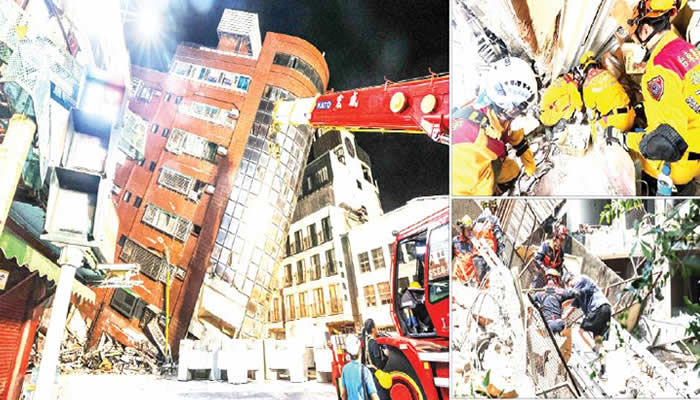At least nine people were killed and more than 1,000 were injured on Wednesday when a powerful 7.4-magnitude earthquake struck Taiwan, damaging dozens of buildings and prompting tsunami warnings across the region before being lifted, officials said.
The quake, the strongest to hit the island in decades, triggered massive landslides that cut off many areas and left dozens believed trapped in tunnels. However, strict building regulations and public disaster awareness helped avert a major catastrophe in the earthquake-prone nation.
Three of the nine reported deaths occurred when people were crushed by boulders dislodged by the quake during a mountain hike near the eastern city of Hualien. Three others died after their vehicles were hit by falling rocks, while another person died at a quarry.
The U.S. Geological Survey located the epicenter 18 kilometers (11 miles) south of Hualien City at a depth of 34.8 kilometers (21.6 miles). The National Fire Agency reported that all fatalities occurred in Hualien county, with 1,011 people injured across Taiwan, though the extent of injuries was not specified.
Wu Chien-fu, director of the Seismology Center at Taiwan’s Central Weather Administration, said it was the strongest quake since a 7.6-magnitude tremor killed around 2,400 people in 1999, warning of potential aftershocks in the coming days.
Despite the destruction, residents expressed relief that casualties were not higher in the disaster-prone island situated along the Ring of Fire tectonic faults. “We were very lucky,” said a woman surnamed Chang, who lived near a warehouse that collapsed, though all 50 people inside were rescued safely.
The United States offered assistance, with the White House saying it “stands ready to provide any necessary assistance” to Taiwan and is monitoring the situation’s potential impact on Japan.
Japan is no ….
A magnitude-6.0 earthquake struck off northeastern Japan’s Fukushima region on Thursday, the Japan Meteorological Agency said, but no tsunami warning was issued.
There were no immediate reports of damage or injuries after the earthquake, whose epicentre had a depth of 40 kilometres (25 miles) and which was also felt in Tokyo.
TEPCO, the operator of the Fukushima nuclear power plant, said “no abnormalities” had been detected at the stricken plant or others in the region.
Japan, one of the world’s most tectonically active countries, has strict building standards designed to ensure structures can withstand even the most powerful earthquakes.
The archipelago, home to around 125 million people, experiences around 1,500 jolts every year, the vast majority of which are mild.
The United States Geological Survey put the magnitude of Thursday’s quake at 6.1, with a depth of 40.1 kilometres.
It comes a day after at least nine people were killed and more than 1,000 injured by a powerful earthquake in Taiwan.
Wednesday’s magnitude-7.4 quake damaged dozens of buildings in Taiwan and prompted tsunami warnings as far as Japan and the Philippines.
Japan’s biggest earthquake on record was a massive magnitude-9.0 undersea jolt in March 2011 off Japan’s northeast coast, which triggered a tsunami that left around 18,500 people dead or missing.
The 2011 catastrophe also sent three reactors into meltdown at the Fukushima nuclear plant, causing Japan’s worst post-war disaster and the most serious nuclear accident since Chernobyl.
The total cost was estimated at 16.9 trillion yen ($112 billion), not including the hazardous decommissioning of the Fukushima facility, which is expected to take decades.



